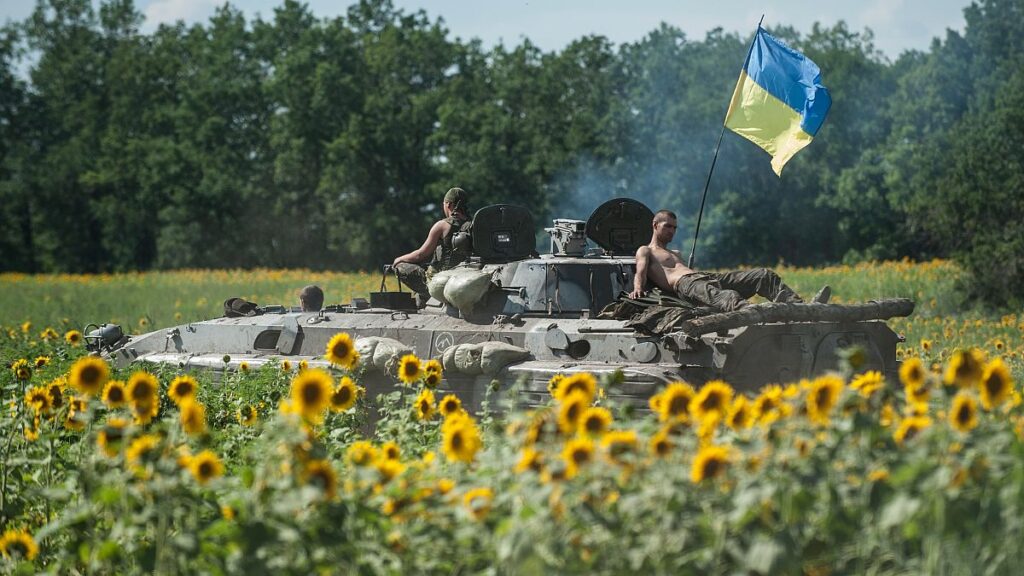Revenues from the hundreds of billions in central bank assets held by Euroclear Belgium are expected to contribute to arming and rebuilding the war-torn country.
The European Commission announced on Wednesday that the EU intended to use frozen Russian assets to send 3 billion euros per year to Ukraine, with the first funds potentially being paid as early as July.
The Russian Central Bank holds around 210 billion euros in the EU, mainly with the Euroclear depository in Belgium, which have been frozen since the invasion of Ukraine in 2022.
Now, officials are proposing to use interest from these assets to support Ukraine, fulfilling a long-standing promise that has been delayed by concerns about the broader economic and political ramifications of this unprecedented step.
“Today we maintain pressure on Russia and hold it responsible for its illegal act of aggression, as well as the considerable damage and suffering it has caused”says the European Commissioner, Valdis Dombrovskis, in a press release.
This action was coordinated with G7 partners, which also includes the United Kingdom and the United States, adds Valdis Dombrovskis.
In October, EU leaders asked Brussels to examine how to use additional Central Bank revenues to support Ukraine, without breaking EU or international law.
The authorities estimate that, subject to changes in interest rates, this measure could generate between 2.5 and 3 billion euros per year after tax, with Euroclear allowed to retain a percentage of around 13% to cover its administrative costs and legal liability.
This sum would come on top of last week’s €5 billion deal under the European Peace Facility (ESF), and the week the EU provided its first bridging funding of 4.5 billion euros under the Facility for Ukraine.
But the money also comes as conditions on the battlefield in Ukraine become increasingly difficult and vital U.S. funding is delayed by wrangling within Congress.
Speaking in Brussels on Wednesday, Ukrainian Prime Minister Denys Shmyhal welcomed the new EU proposal, but said using interest was only a first step.
“We insist that all frozen assets be confiscated or otherwise used”he told the press. “Europe and the world need an effective precedent to make the aggressor pay a high price for the destruction he has caused in Ukraine.”
While it was initially planned to finance the reconstruction of Ukraine, 90% of the funds released by today’s plans are expected to flow through the European Peace Facility, which aims to provide munitions to the Ukraine.
This could reflect growing concerns that Ukraine risks not just being destroyed, but losing the war outright, which would have significant consequences for the European Union.
“If Putin were to conquer Ukraine, the Russian army would be on our borders”declared the head of European diplomacy Josep Borrell to the press. “We can be sure that it will not stop there.”
While the plans still need to be approved by EU member states meeting in the Council, Josep Borrell told Denys Shmyhal that he “hope we can soon agree and turn banknotes into weapons, because your soldiers do not fight with banknotes”.
Officials appear unconcerned by concerns from the European Central Bank, which fears the move could have broader implications for the euro’s credibility as the world’s reserve currency
So far, the European Union has been cautious, but authorities now hope that the first payments can take place as early as July. The first payment will be backdated to February 2024, when a new European law was passed requiring Euroclear to segregate Russian assets.

